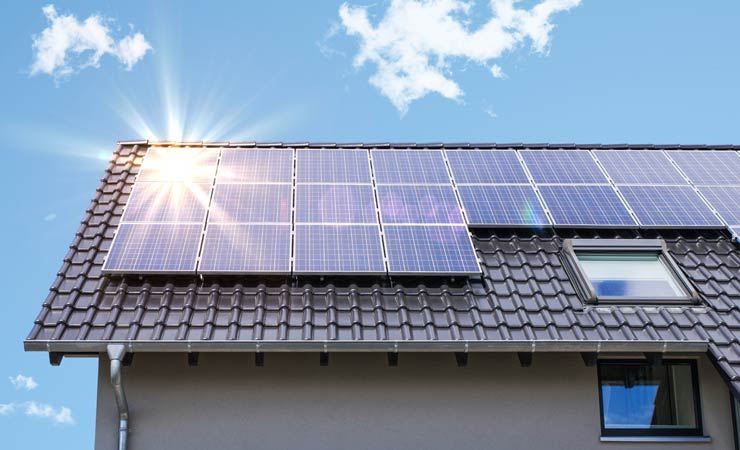
Electricity costs are constantly increasing. So does it make sense to act independently of providers and generate your own electricity? If you want to operate independently of large energy suppliers, you have a variety of options to choose from. However, these methods also have their advantages and disadvantages.
The combined heat and power plant
A small combined heat and power plant is suitable for generating electricity and heat and thus covering your own needs. The CHPs are available in three different sizes. So-called nano models generate up to ten kilowatts of thermal power and 2.5 kilowatts of electrical power.
In contrast, a micro-sized combined heat and power plant achieves between 10 and 40 kilowatts of thermal output and 2.5 to 20 kilowatts of electrical output.
In the mini version, a CHP achieves more than 50 kilowatts of thermal output and 20 and 50 kilowatts of electrical output. The individual size for private use depends on the number of residents and size of the home as well as the required electricity and heat requirements.
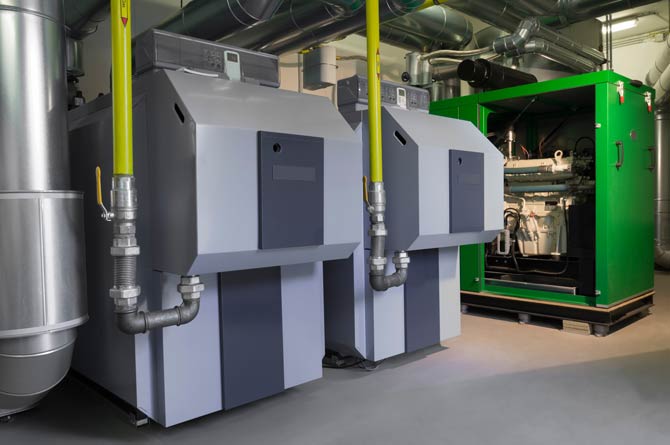
Cost of a combined heat and power plant
Combined heat and power plants in the nano or micro versions cost between 15,000 and 30,000 euros. Mini versions are particularly suitable for apartment buildings. In addition, consumers must reckon with tradesman costs for installing and connecting the system.
Advantages and disadvantages at a glance
A CHP is a device that generates electricity and heat at the same time. Therefore, the small power plants are also well suited to cover your own electricity and heat requirements. The device is suitable for converting 95 percent of the energy used into electricity and heat.
However, electricity and heat are generated by an Otto engine, which in turn is operated with oil, liquid gas, natural gas or diesel.
Accordingly, the gas and power supply in our own combined heat and power plant continues to play an important role. In this way, the CHP can also be operated with coal or wood pellets. The purchase in the small power plants is only worthwhile if the device is in operation for at least 5,500 hours per year.
Is there government funding?
The state supports the construction or purchase of combined heat and power plants in private homes. KfW – the Reconstruction Loan Corporation – is responsible for this funding. The Federal Office of Economics and Export Control is currently not offering any subsidies for mini power plants.
In order to receive the grants, however, applicants must comply with specific requirements. For example, it is important to submit the application for funding before the construction and purchase of the combined heat and power plant. Interested parties are also well advised to have the completed documents checked by a specialist before submitting the application.
The photovoltaic system
The best-known method of generating your own electricity is a solar or photovoltaic system. With this method, solar panels are attached to the carport, garage or house roof. However, before installing it, it is important to check the statics of the building.
Although the panels are quite light, they still require prior verification. A prerequisite is a certain pitch of the roofs.
Photovoltaic systems are often only worthwhile when their performance is high enough and the electricity consumption is covered by the electricity obtained from solar energy. Special online calculators are available for this purpose on the Internet.
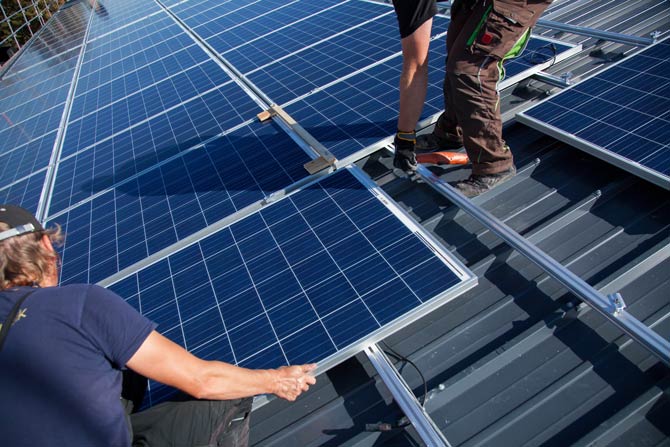
Cost of a photovoltaic system
The cost of a photovoltaic system depends on its size and output. The price for a kilowatt peak – a kWp – is currently 1,500 to 2,000 euros. Small systems with up to four kilowatt peak generate around 4,000 kWh for a price of 6,000 to 9,000 euros.
These systems are sufficient for a small household or people with low power consumption. The systems are also suitable for charging e-cars.
Benefits of the plants
Owners of a photovoltaic system no longer have to adjust their power supply to energy suppliers. One prerequisite, however, is that the self-generated electricity can be stored long enough to survive dark weeks or days.
It is also an advantage that the panels are mounted on roofs.
Alternatively, even the balcony railing is suitable for setting up the solar panels. Thus, solar systems are suitable for tenants or homeowners.
Disadvantages of photovoltaic and solar systems
Anyone who obtains electricity from a photovoltaic and solar system must rely on sufficient solar radiation. Thus, it cannot be ruled out that on cloudy and rainy days or in autumn and winter there will not be enough stored electricity available for the energy supply. In this case, municipal energy suppliers are an alternative.
In order to get as much sun as possible and to make the power supply as optimal as possible, the solar panels must be aligned to the south. But not all roofs face south. Another requirement is that the roof area and the number of panels are sufficient. Otherwise, even long and good solar energy is not enough to generate enough energy.
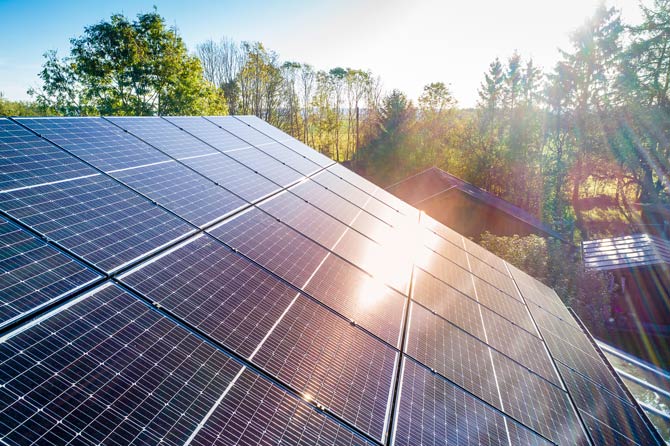
State subsidies for the systems
Consumers receive a government subsidy for the purchase and installation of the photovoltaic system. This funding is paid out, for example, by the KfW – the Reconstruction Loan Corporation. Prospective buyers should keep in mind that all necessary documents to apply for the subsidy are available before assembly and purchase.
If the subsidy is approved, prospective buyers can purchase the system and have it professionally installed.
The chances of the application being approved are particularly high if an energy consultant has approved the documents in advance.
Windmill
Alternatively, a wind turbine can be used to generate electricity. These systems generate up to 5,000 kWh per year. You can choose between horizontal and vertical systems as well as models with rotor blades of different lengths and various assembly and installation options.
The models are adapted to the conditions prevailing at the respective location. Wind turbines are a good choice for anyone who owns large properties in fairly windy regions. A mast is particularly suitable for installation.
Theoretically, property owners can also set up a wind turbine in the garden or on the balcony. But in this case it is important that interested tenants in particular coordinate with their landlords. A building permit is also required for a wind turbine that is more than ten meters in size.
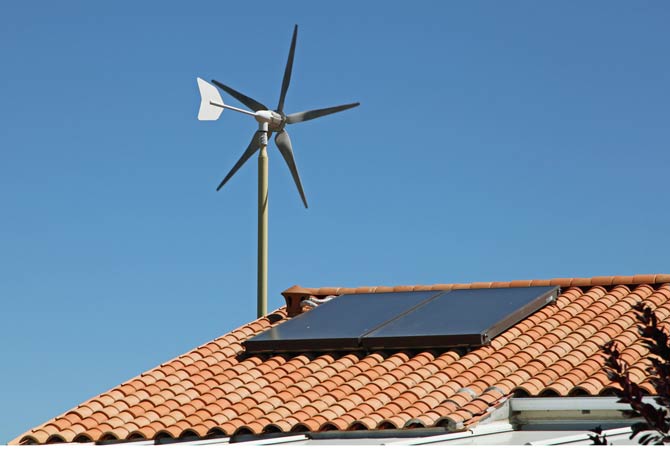
cost of a windmill
Compared to other systems, a wind turbine is comparatively inexpensive. Per kWp, costs of 1,000 to 1,500 euros are realistic. Specialists advise private individuals to opt for a larger model when in doubt.
These models cost at least 25,000 euros and are comparatively robust.
In addition to the purchase and assembly costs, wind turbine owners also have to pay insurance fees. In most cases, building and liability insurance is sufficient.
Advantages and disadvantages of wind turbines
Small wind turbines or mini wind turbines generate clean electricity. Depending on the weather, wind turbine owners are more or less dependent on their electricity providers. However, prospective buyers should keep in mind that small systems in particular are quite error-prone. In general, the smaller a system is, the more ineffectively the system works.
In these versions, maintenance and electricity costs are usually significantly higher than the electricity costs generated by the system. In contrast, mini power plants are more expensive, but also much more robust. The power supply of a wind turbine depends on the weather. In addition, not every location is equally suitable for wind turbines.
Pay attention to storage options
Due to high electricity costs of over 30 cents per kWh, it is advisable to store the electricity generated over the long term. Certain storage systems such as lithium-ion batteries or lead-acid batteries are available for this. If you are interested in these storage systems, you should ideally contact a specialist when purchasing a solar or wind power plant.
These experts provide information about which memory sizes and memory models are particularly well suited to individual needs. The space available for the memory module or the acquisition costs are also decisive.
Source: https://blogg.de/strom-selbst-erzeugen/


